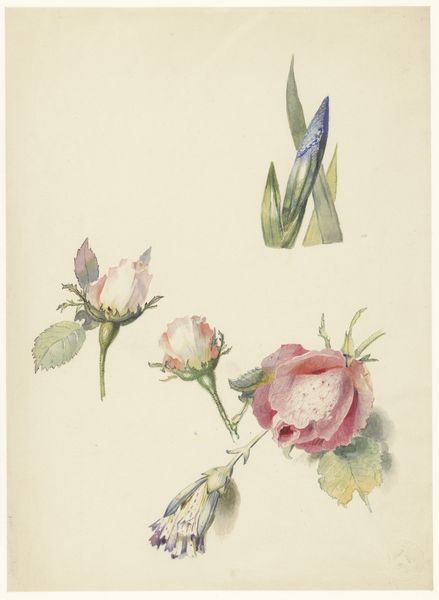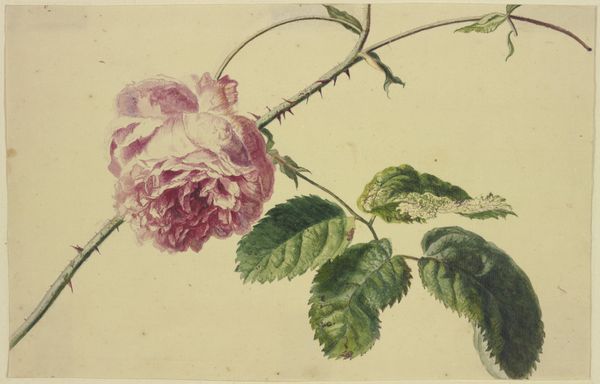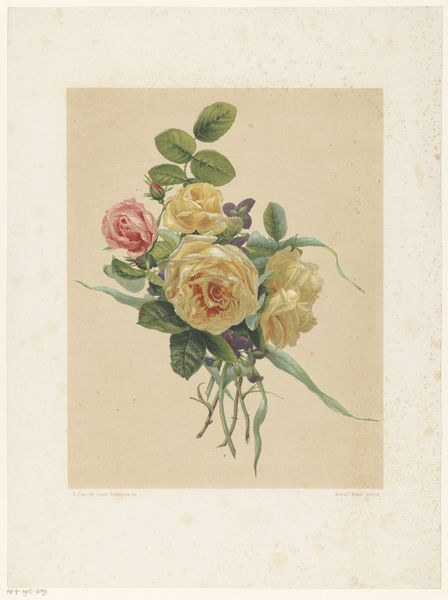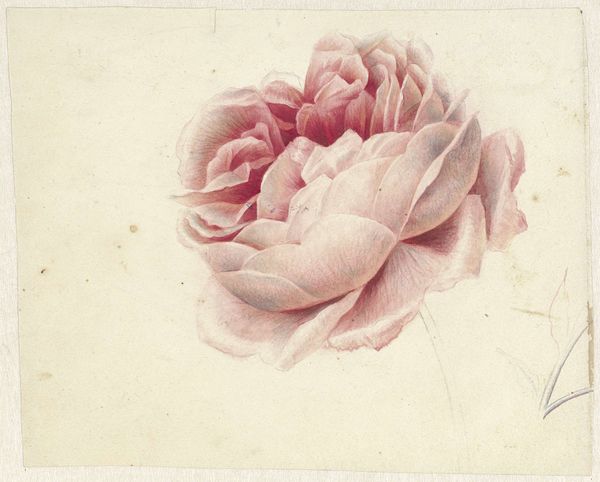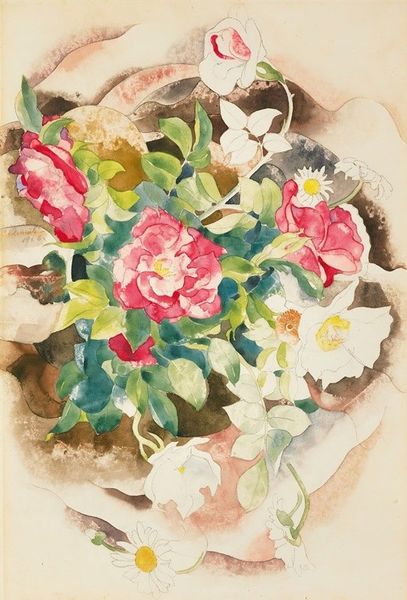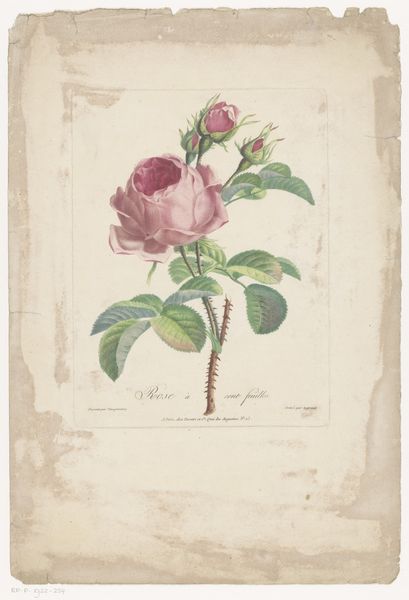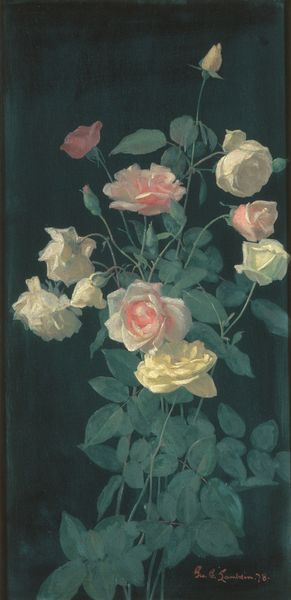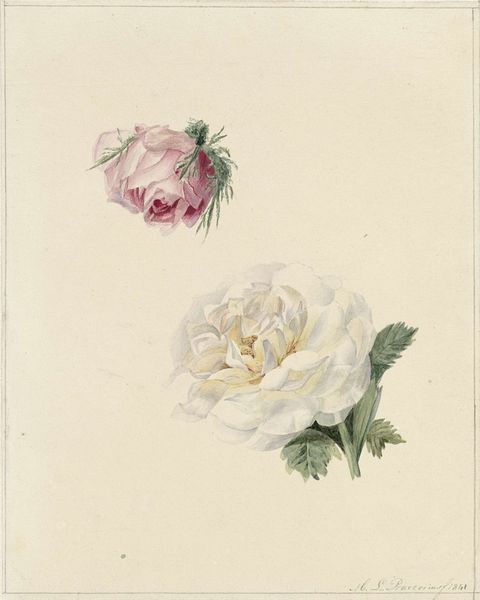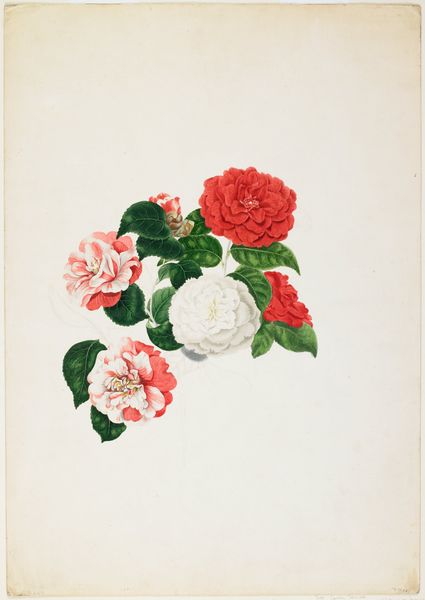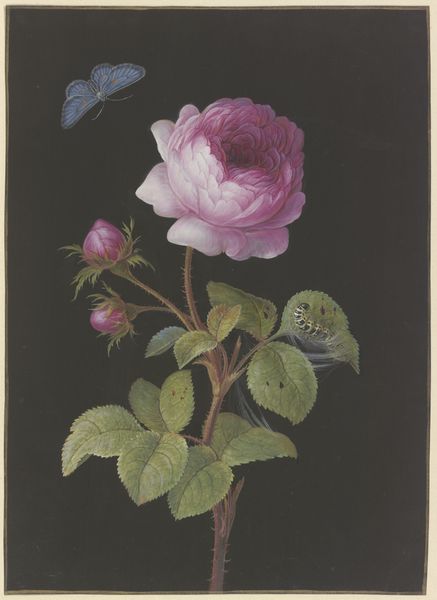
Dimensions: Sheet: 7 x 4 3/4 in. (17.8 x 12cm)
Copyright: Public Domain
Curator: The delicate "Two Roses," by Zacharie Astruc, created sometime between 1879 and 1909, employs watercolor in an Impressionistic style. It resides here at the Metropolitan Museum of Art. What do you make of it? Editor: My initial thought? Ethereal, almost transient. The light, the color—it’s less about capturing botanical accuracy, and more about the impression of roses. I immediately zoom in on the water staining evident on the aged paper itself, creating a halo-like backdrop around these fragile specimens. Curator: Indeed. Note how Astruc renders form with washes of color rather than strict outlines. This treatment underscores the principles of Impressionism. Consider how the varying hues of pink, contrasted with subtle green washes of the leaves, capture the play of light on the forms. Semiotically, what does this signify? Editor: It draws attention to the means by which the image was composed. Look at how the watercolor pools at the edges of the leaves, defining their contours; it betrays the process. This watercolor isn’t about pristine depiction—it embraces imperfection and allows the support to show through. Curator: Precisely! It speaks to a dialogue between artistic intent and the very physicality of the medium, thus rendering a feeling more potent than literal reproduction ever could. Editor: It even highlights the artist’s hand—not just in application but, given the likely timeframe, in the very creation of pigments and their interaction with handmade papers that likely were integral to Impressionistic artmaking! How much does this process define the movement, and this image in particular? Curator: We begin to see how the construction, application, and deconstruction form the crux of aesthetic comprehension and historical contextualization. This dialogue highlights what remains critically impactful about works like these: the fusion of artistic perception with a command of craft. Editor: To see roses reduced to their very essence, not as inert subject matter but through active art making…that shifts how one values not just beauty but its manufacture. Curator: Quite, bringing it to full bloom, so to speak. Editor: Indeed! And allowing new appreciation to, uh, bud for the work on display.
Comments
No comments
Be the first to comment and join the conversation on the ultimate creative platform.
